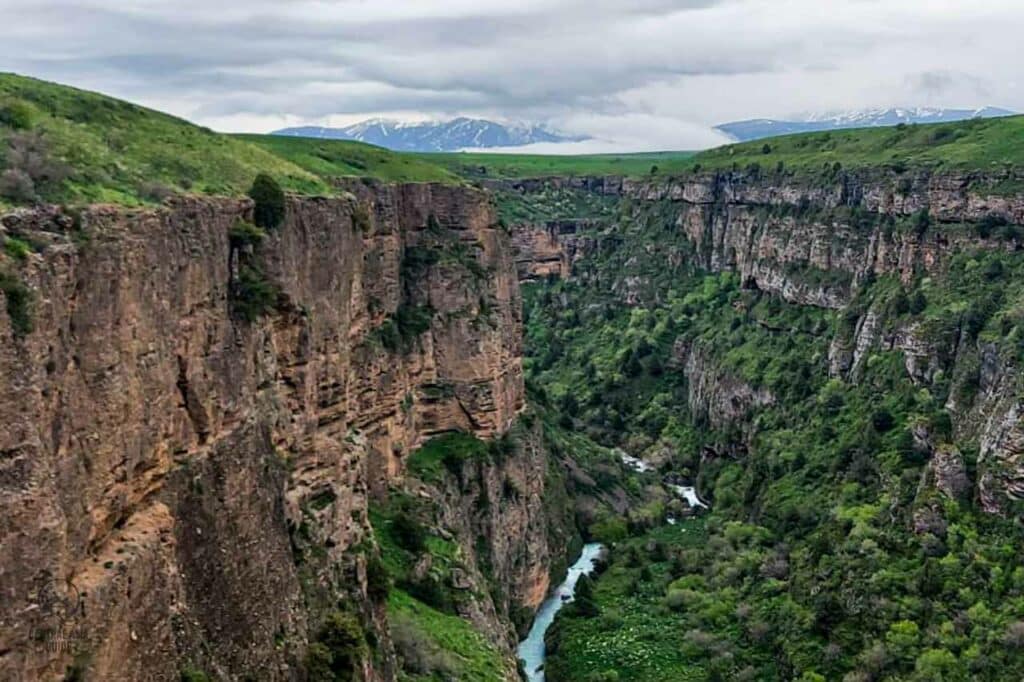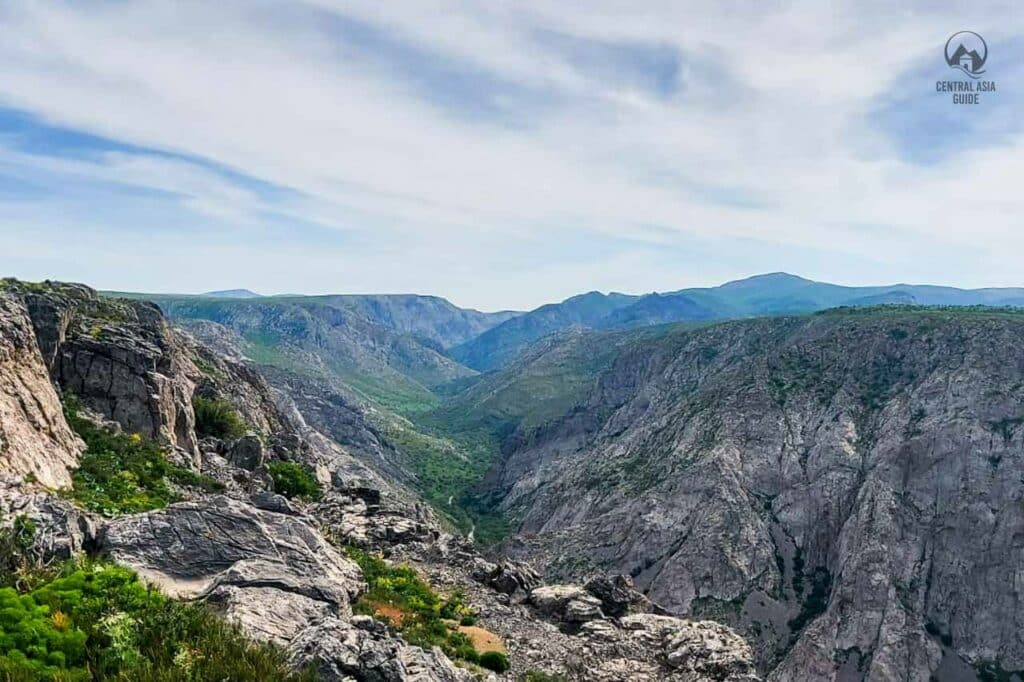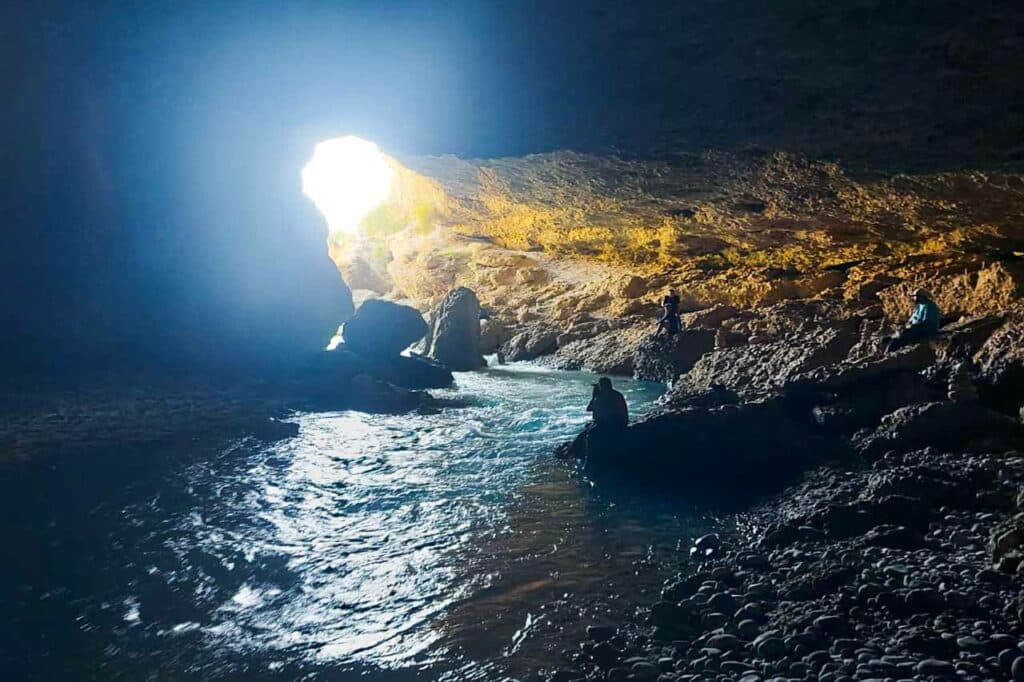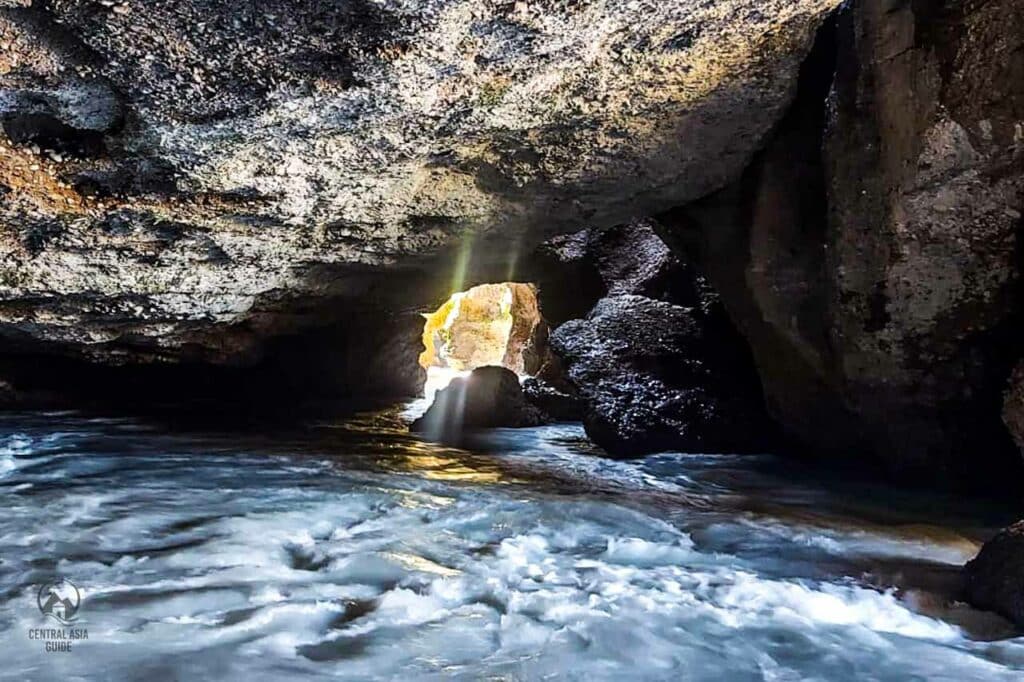Aksu-Zhabagyly Nature Reserve
Aksu-Zhabagyly Nature Reserve
Founded in 1926, Aksu Zhabagly National Nature Reserve is the oldest nature reserve in Central Asia and one of the most accessible reserves in Kazakhstan. Located in the Talassky Alatau range of the western Tian Shan Mountains, it preserves diverse ecosystems ranging from Kazakh steppe to juniper forests, upland meadows, and stunning snow-capped peaks surrounded by large glaciers.
Situated at the northwestern end of the Tian Shan, the reserve stretches from the edge of the steppe at 1200 meters to the towering Pik Sayram at 4239 meters. The Aksu Zhabagly Reserve offers a variety of landscapes, making it a must-visit destination for travelers interested in mountain exploration, wildlife, and Kazakhstan’s natural beauty.
The reserve’s name comes from two major rivers flowing through its territory: Aksu River (meaning “white water”) and Zhabagly River (meaning “one-year-old horse”). The Aksu River gets its name from the white water flowing through limestone mountains, while Zhabagly River is linked to a local legend about a settler’s survival and perseverance. The story adds a rich cultural layer to this stunning natural reserve.
With its rich history, diverse wildlife, and easily accessible terrain, Aksu Zhabagly Nature Reserve is a top destination for eco-tourism and nature lovers. Whether you’re hiking in the Tian Shan Mountains, exploring Kazakhstan’s wildlife, or learning about local legends, this national nature reserve is the perfect place for adventure and discovery.
Aksu Zhabagyly Fauna and Flora
Situated where the mountains meet the steppe, the Aksu Zhabagly Nature Reserve is a rich haven of biodiversity. In late April and early May, the reserve’s landscape comes alive with vibrant red Greig’s tulips. One particularly famous spot, Red Hill, gets its name from the brilliant red color of the tulips, which blanket the area in spring. With densities exceeding 60 wild tulips per square meter, it’s a must-see natural spectacle. Another notable species, Kaufmann’s tulip, thrives at higher elevations in the western Tian Shan mountains and adds to the area’s botanical significance. The region is considered a possible birthplace of the wild tulip, making it a key location for flower enthusiasts.
While Aksu Zhabagly is home to several fascinating mammal species, spotting the elusive snow leopard is rare, as they are confined to remote areas and tend to hunt at night. The reserve also shelters the white-clawed Tian-Shan bear, a close relative of the brown bear, as well as the Siberian ibex and Eurasian lynx. Wildlife enthusiasts may also spot ibex, argali sheep, red marmots, and an array of bird species like paradise flycatchers, golden eagles, and various types of vultures. Spring is the best time to see the Tian-Shan bears.
The scenic beauty of the reserve is equally impressive, featuring lush green valleys, rushing rivers, towering snowcapped peaks, and majestic high-level glaciers. Whether you’re an avid nature lover, photographer, or simply seeking an escape into Kazakhstan’s wild landscapes, Aksu Zhabagly offers an unforgettable experience.


Aksu Canyons
Aksu Canyon is a stunning natural formation that draws travelers with its dramatic landscapes and geological significance. The canyon, formed by the Aksu River, features towering cliffs and a rich variety of plant and animal life, making it an ideal spot for nature lovers and outdoor enthusiasts. The canyon itself stretches for several kilometers, and its awe-inspiring rock formations create a breathtaking sight, with sharp, jagged peaks contrasting against the lush greenery at the base.
Aksu Cave
One of the most interesting features of Aksu Canyon is the nearby Aksu Canyon Cave, a fascinating subterranean location that adds to the area’s allure. The cave is known for its stalactites and stalagmites, creating a unique and mysterious atmosphere.
Both Aksu Canyon and Aksu Canyon Cave are located near the Aksu Zhabagly Nature Reserve, making them an ideal addition to any visit to the area. These natural attractions provide a perfect combination of outdoor adventure, cultural history, and geological wonders, making them must-see destinations for those exploring the region. Whether you’re hiking through the canyon or exploring the caves, Aksu offers a memorable experience for anyone seeking adventure in Kazakhstan’s wild landscapes.


Travel to Aksu-Zhabagyly Reserve and Aksu Canyon
The primary entry point to the Aksu-Zhabagyly Nature Reserve is the village of Zhabagyly, located 70 km east of Shymkent. From Zhabagyly, it’s a 6 km journey southeast to the reserve’s nearest entrance. Once inside, you can embark on a scenic 1.5-hour walk to Kshi-Kaindy, a mountain refuge situated at an altitude of 1,700 meters near a picturesque waterfall. Continuing another 6 km leads to Ulken-Kaindy, a second refuge.
You can explore the area on horseback, it will allow to spend two nights at Ulken-Kaindy. For more adventurous trekkers, there are challenging routes that climb over passes exceeding 3,500 meters, with opportunities to spend nights in caves for a truly immersive experience.
Aksu canyon, 300 meters deep, is a breathtaking natural wonder and is accessible via a 25 km drive from Zhabagyly village.
Other sights and destinations near Aksu Zhabagyly
Page updated 12.7.2024